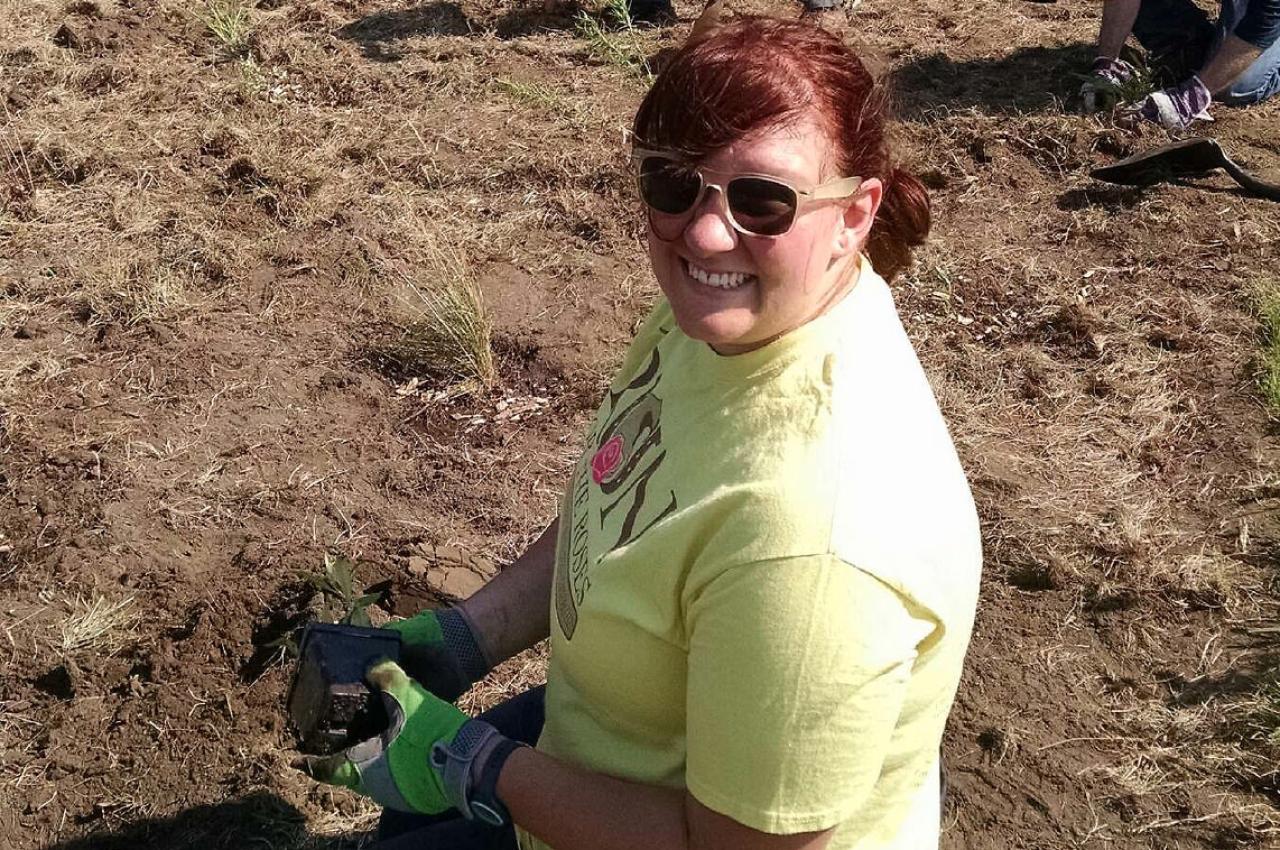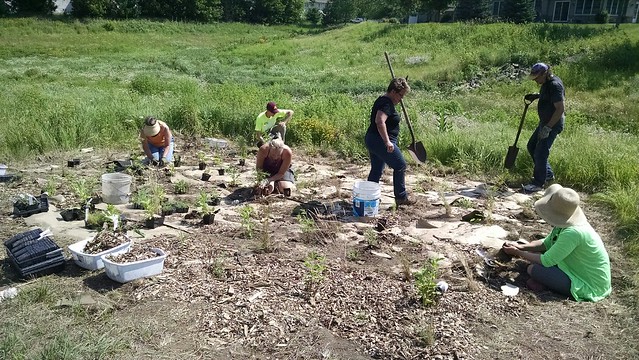Volunteers plant pollinator patches aplenty

Pollinators have been making headlines for all the wrong reasons in the past few years, and dwindling habitat is the key culprit in destroying viable populations across the globe. Thankfully, a variety of organizations, agencies and funders are starting to take action. And while we can never restore all the natural prairie that pollinators depend upon, research from the Xerces Society shows that small plantings or "patches" can really add up to make a difference.
Earlier this summer, Friends of the Mississippi River Vermillion Stewards volunteers worked with Hastings Environmental Protectors to install several pollinator patches. HEP, a local nonprofit that FMR has frequently partnered with over the years, had been developing the plans and securing funding for over a year.
With the help of the City of Hastings, three parks were chosen for the pollinator patches: Cari Park, Greten Park and C.P. Adams. Each site compliments the bevy of natural lands in the Hastings area. Spaced out, the plantings will provide a number of stopping points for our insect friends, including many who voyage over large areas in search of sustenance. Plus, each park is quite popular, so more people will see the beauty of the native plants and perhaps be inspired to create a backyard pollinator patch of their own. (A map of the patches is below.)
How long will it take for pollinators to find the patches? "Surprisingly, I found a monarch larvae on one of the small milkweeds we planted," said HEP's Phil Vieth.

Monarch larva on milkweed.
This may seem awfully quick, but the insects' pull towards these plants is strong. Many pollinators rely on a specific host plant for placing larvae and foraging during their life cycle. Monarchs need milkweed, which in turn benefits through the pollinating of its seed. Such plant-insect relationships are the result of coevolution over millenia, and are exactly what these pollinator patches support. FMR is proud to support pollinators through our larger-scale habitat protection and restoration projects, but smaller urban, suburban and park plantings such as these are vital for the spaces in between.
Plant your own patch
If you have a corner of your yard you'd be willing to plant for pollinators, please do! Whether it's a boulevard garden, a swath along the garage, or a large raingarden, any patch will help. The most important thing is to choose the right plants. We reccomend starting with this list from the University of Minnesota Bee Lab. For more assistance, check out the Xerces Society. Just remember: It's okay to ask for "neonic"-free plants at the garden center. and it's okay to start small!
Protect pollinator habitat with FMR
While the native plants in the pollinator patches will eventually be hardy, the young plants will need a bit of help from volunteers to ensure that invasive speecies or weeds don't take over. To receive notices of future pollinator plant tendings, sign up for our Vermillion Stewards emails with Amy Kilgore, akilgore@fmr.org. Our pollinators will surely be thankful!
Visit the patches
Thank you, pollinator partners
This pollinator patch project would not have been possible without the dedication of Hastings Environmental Protectors and our Vermillion Stewards volunteers. Special thanks to funders and partners the City of Hastings, Hastings United Way, Winter Wheat Foundation, Pentair and the Vermillion River Watershed Joint Powers Organization.
